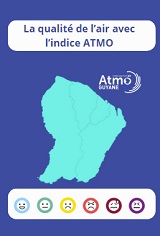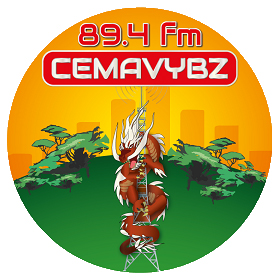Blada.com
lundi 30 juin
Boîtes aux lettres
Courrier des lecteurs
Petites annonces
Emploi / Formation
Covoiturage
Infos citoyennes
Infos citoyennes
07/08/20
Détecter le COVID-19 dans la salive, une révolution dans le dépistage ?
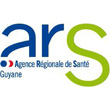 L’essai Covisal, mené par le centre hospitalier de Cayenne, vise à comparer deux techniques de recherche du Covid-19 : le prélèvement naso-pharyngé tel qu’il est pratiqué depuis le début de l’épidémie, et la recherche du virus dans les crachats des patients. Limité aux urgences du CHC, l’essai s’étend progressivement au CDPS de Maripasoula, aux opérations de dépistage dans les quartiers, à la tente de l’ARS et peut-être plus tard aux urgences obstétricales, explique le Pr Magalie Pierre-Demar, cheffe du laboratoire de l’hôpital.
L’essai Covisal, mené par le centre hospitalier de Cayenne, vise à comparer deux techniques de recherche du Covid-19 : le prélèvement naso-pharyngé tel qu’il est pratiqué depuis le début de l’épidémie, et la recherche du virus dans les crachats des patients. Limité aux urgences du CHC, l’essai s’étend progressivement au CDPS de Maripasoula, aux opérations de dépistage dans les quartiers, à la tente de l’ARS et peut-être plus tard aux urgences obstétricales, explique le Pr Magalie Pierre-Demar, cheffe du laboratoire de l’hôpital.
Et si, d’ici à quelques semaines, il suffisait de cracher dans un pot plutôt que de recevoir un écouvillon dans le nez pour savoir si l’on est positif au Covid-19 ? Cela dépendra notamment des résultats de l’évaluation Covisal, mené par le centre hospitalier de Cayenne. Son objectif est de s’assurer que l’analyse du crachat d’un patient donne les mêmes résultats que son prélèvement naso-pharyngé.
Depuis le début de l’épidémie, les patients se présentant aux urgences du centre hospitalier de Cayenne sont testés par prélèvement naso-pharyngé. Depuis le 22 juillet, il leur est proposé, en complément, de cracher dans un pot. Le laboratoire analyse les deux prélèvements. Si les résultats sont les mêmes, la technique salivaire pourrait devenir une référence en terme de dépistage COVID à l’avenir.
Soixante-cinq personnes ont d’ores et déjà été testées selon les deux méthodes. « Les résultats sont intéressants en termes de tendance, constate le Pr Magalie Pierre-Demar, cheffe du laboratoire du CHC. Ce qui risque de nous manquer, c’est du volume, (un nombre suffisant d’échantillons à comparer). Il nous faut les conforter. »
Le double-test est donc désormais proposé aussi au centre délocalisé de prévention et de soins (CDPS) de Maripasoula, où le virus circule activement. Il devait l’être aussi, à partir d’hier, sur des opérations de dépistage dans les quartiers menées par la Croix-Rouge, Médecins du Monde et la Réserve sanitaire, ainsi qu’à la tente de l’ARS au CHC. Le laboratoire et le centre d’investigations cliniques (CIC) discutent aussi de la possibilité de mener l’essai aux urgences obstétricales de l’hôpital de Cayenne.
« Notre objectif est de réaliser 1 500 prélèvements pour avoir 300 positifs pour lesquels comparer les deux techniques, poursuit le Pr Demar. Quand nous avons proposé l’essai, nous étions déjà au pic de l’épidémie. Il a fallu aller très vite, notamment le Pr Mathieu Nacher (chef du CIC), pour obtenir les autorisations. Nous nous étions donné trois mois. Cela prendra peut-être un peu plus de temps. »
Dans son avis du 27 juillet, le comité scientifique Covid-19 du gouvernement soutient l’essai cayennais. Il souligne les bons résultats en termes de spécificité des essais menés ailleurs dans le monde, et met en garde contre les variations en termes de sensibilité. La spécificité d’un test est la probabilité qu’il revienne négatif quand il est pratiqué sur une personne indemne. En matière de crachat, il est supérieur à 95 %, selon le comité scientifique. Sa sensibilité est la probabilité qu’il revienne positif alors que le patient est effectivement infecté. Le résultat est plus faible et très variable selon les techniques utilisées.
Pour repérer le virus Sars-CoV-2 dans le crachat des patients, le laboratoire de Cayenne travaille par extraction et amplification, comme pour le prélèvement naso-pharyngé. C’est ensuite que les choses se compliquent. « Les gènes sont très longs, explique le Pr Demar. Chaque technique cible donc une partie du gène, qui peut être différente d’un fournisseur à l’autre. Le centre national de référence en recense une trentaine. Certaines sont jugées excellentes, d’autres moins bonnes. »
Si l’essai mené en Guyane se révèle concluant, il pourrait rapidement trouver son utilité. Que ce soit auprès de publics supportant moins bien l’écouvillon (enfants, personnes âgées…) ou dans des lieux où le crachat générerait un gain de temps majeur comme les aéroports. Les résultats du laboratoire de Cayenne pourraient donc changer la vie de millions de personnes.
The Covisal trial, conducted by the Cayenne hospital center, aims to compare two research techniques for Covid-19: nasopharyngeal sampling as it has been performed since the start of the epidemic, and the search for the virus in sputum from patients. Limited to CHC emergencies, the trial is gradually being extended to the CDPS in Maripasoula, to screening operations in the neighborhoods, to the ARS tent and perhaps later to obstetric emergencies, explains Prof. Magalie Pierre-Demar. , head of the hospital laboratory.
What if, in a few weeks' time, it was enough to spit into a pot rather than get a swab in the nose to know if you are positive for Covid-19? This will depend in particular on the results of the Covisal assessment, conducted by the Cayenne Hospital Center. Its goal is to ensure that the analysis of a patient's sputum gives the same results as their nasopharyngeal swab.
Since the start of the epidemic, patients presenting to the emergency room of the Cayenne hospital center have been tested by nasopharyngeal swab. Since July 22, they have been offered, in addition, to spit in a pot. The laboratory analyzes the two samples. If the results are the same, the saliva technique could become a benchmark for COVID screening in the future.
Sixty-five people have already been tested using both methods. "The results are interesting in terms of trend," notes Professor Magalie Pierre-Demar, head of the CHC laboratory. What we might be missing is volume, (enough samples to compare). We need to reinforce them. "
The double-test is therefore now also offered at the delocalized prevention and care center (CDPS) in Maripasoula, where the virus is actively circulating. It was also to be, from yesterday, on screening operations in neighborhoods led by the Red Cross, Médecins du Monde and the Sanitary Reserve, as well as the ARS tent at the CHC. The laboratory and the Clinical Investigation Center (CIC) are also discussing the possibility of conducting the trial in the obstetric emergency room at Cayenne Hospital.
"Our goal is to perform 1,500 samples to have 300 positives for which to compare the two techniques," continues Professor Demar. "When we proposed the trial, we were already at the peak of the epidemic. It was necessary to go very quickly, in particular Professor Mathieu Nacher (head of the CIC), to obtain the authorizations. We had given ourselves three months. It might take a little longer. "
In its July 27 opinion, the government's Covid-19 scientific committee supports the Cayenne trial. He underlines the good results in terms of specificity of tests carried out elsewhere in the world, and cautions against variations in terms of sensitivity. The specificity of a test is the probability that it will come back negative when performed on a person unharmed. In terms of sputum, it is greater than 95%, according to the scientific committee. Its sensitivity is the probability that it will come back positive when the patient is indeed infected. The result is lower and very variable depending on the techniques used.
To identify the Sars-CoV-2 virus in the sputum of patients, the Cayenne laboratory works by extraction and amplification, as for the nasopharyngeal sample. Then things get complicated. “The genes are very long,” explains Prof. Demar. Each technique therefore targets a part of the gene, which may be different from one supplier to another. The national reference center lists around thirty. Some are rated as excellent, others less good. "
If the trial in French Guiana proves successful, it could quickly find its uses. Whether it is for audiences who are less tolerant of the swab (children, the elderly, etc.) or in places where spitting would generate a major saving of time, such as airports. The results of the Cayenne laboratory could therefore change the lives of millions of people.
Raccourcis
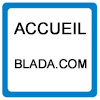
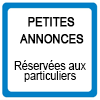
passer une petite annonce
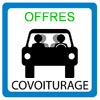
passer une annonce de covoiturage
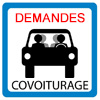
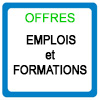
passer une annonce d’emploi
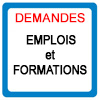
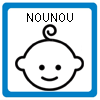
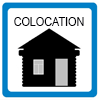
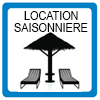
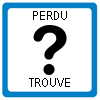
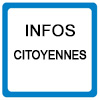
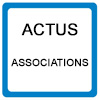
associations, postez vos actualités
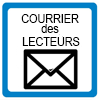
participez au courrier des lecteurs
La Guyane c’est ici
La qualité de l’Air avec
ATMO
Photothèque

Lancements 2022
Vol 259 Ariane 5



